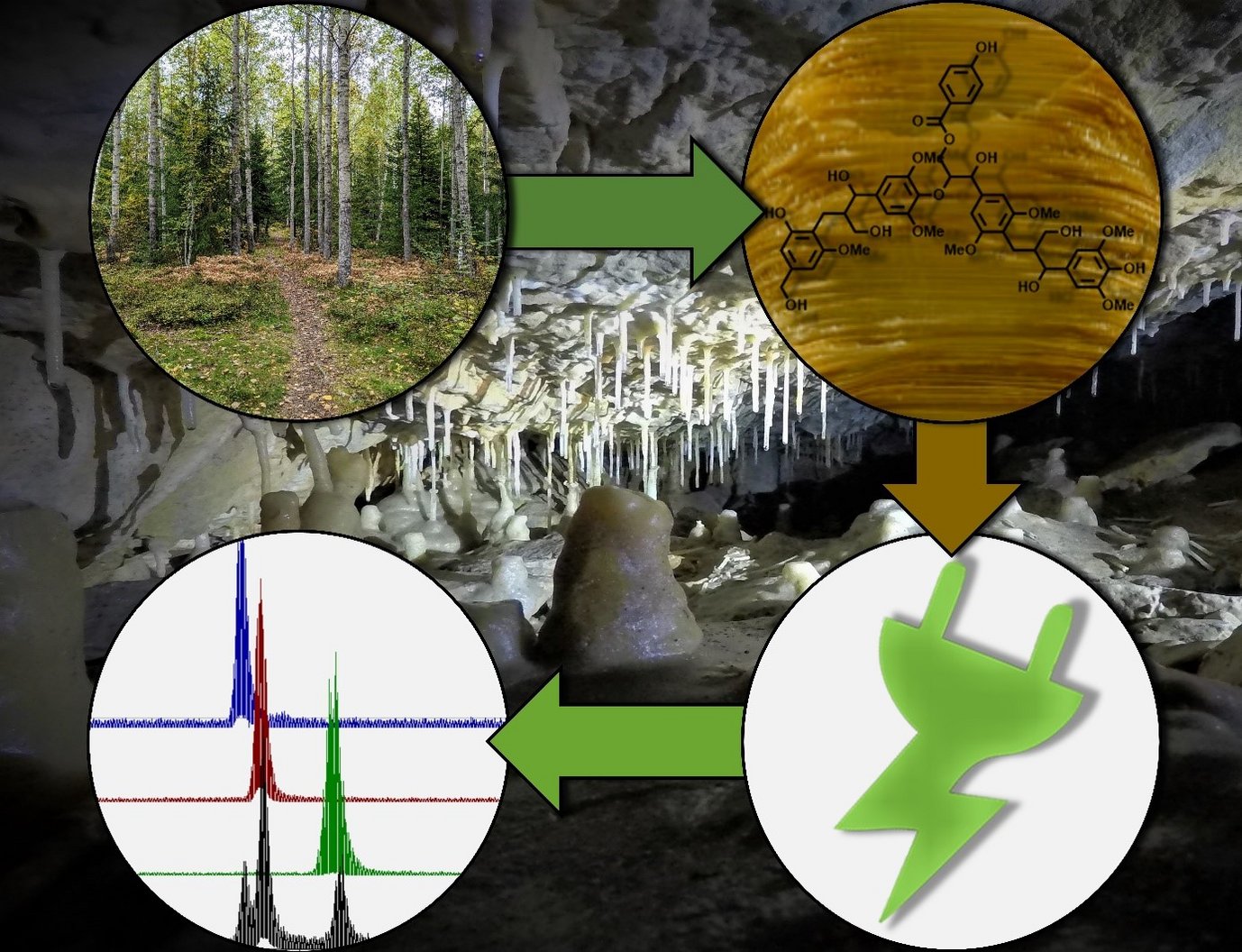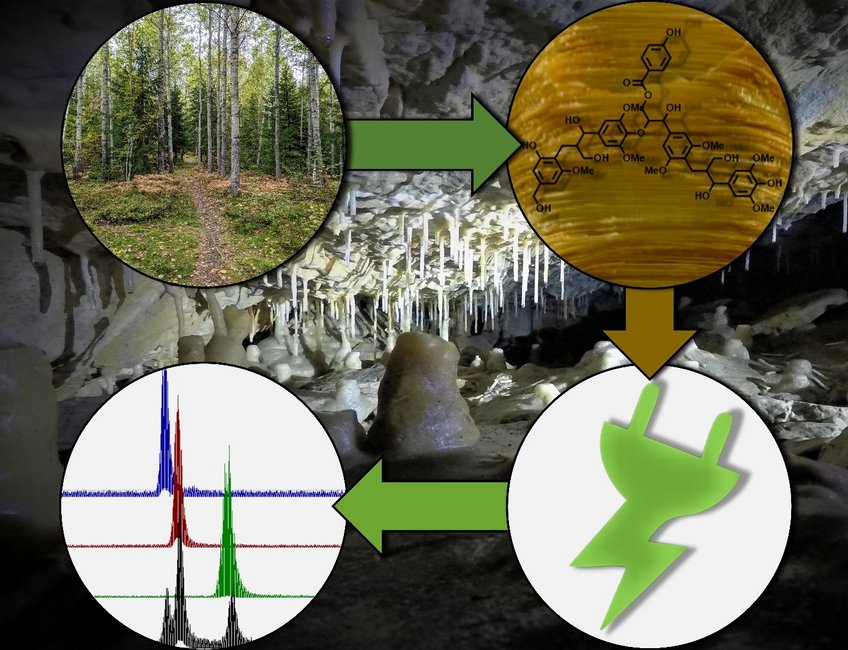Development of a method for anodic degradation of lignin for the analysis of paleo-vegetation proxies in speleothems
High-resolution paleoclimate archives such as stalagmites (also called speleothems) hold the potential to reconstruct different aspects of past environments using different proxy substances. One of these is lignin, a biopolymer found exclusively in vascular plants. After degradation, the monomeric composition can be used to reconstruct paleo-vegetation.
Here we present an electrochemical method for the anodic oxidation and subsequent degradation of lignin in speleothems to utilise the resulting lignin oxidation products (LOPs) as paleo-vegetation markers. LOPs were analysed using an ultrahigh performance liquid chromatography (UHPLC) system coupled to a high-resolution mass spectrometer (HRMS). The method presented here achieved comparable or even higher LOP concentrations than established CuO and CuSO4 oxidation methods. The method represents a new tool for the analysis and reconstruction of paleo-vegetation and has the potential to be applied to other climate archives.

